Methods and Materials
[Main] [Introduction] [Sampling Locations] [Methods] [Results/Discussion] [Data Repository]
Conductivity-Temperature-Depth (CTD):
The CTD determines water properties and provides a depth profile of temperature, salinity, density, dissolved oxygen, fluorescence and transmittance. The CTD was completed at all 25 sampling stations. The Hood Canal Salmon Enhancement's CTD contained two niskin bottles that were 1.0 L and a LICOR meter. Sampling stations completed with this CTD included 1-6 and 12-17. The University of Washington's CTD contained a single 2.5 L niskin bottle with a transmissometer. The sampling stations were 7-11 and 18-25.
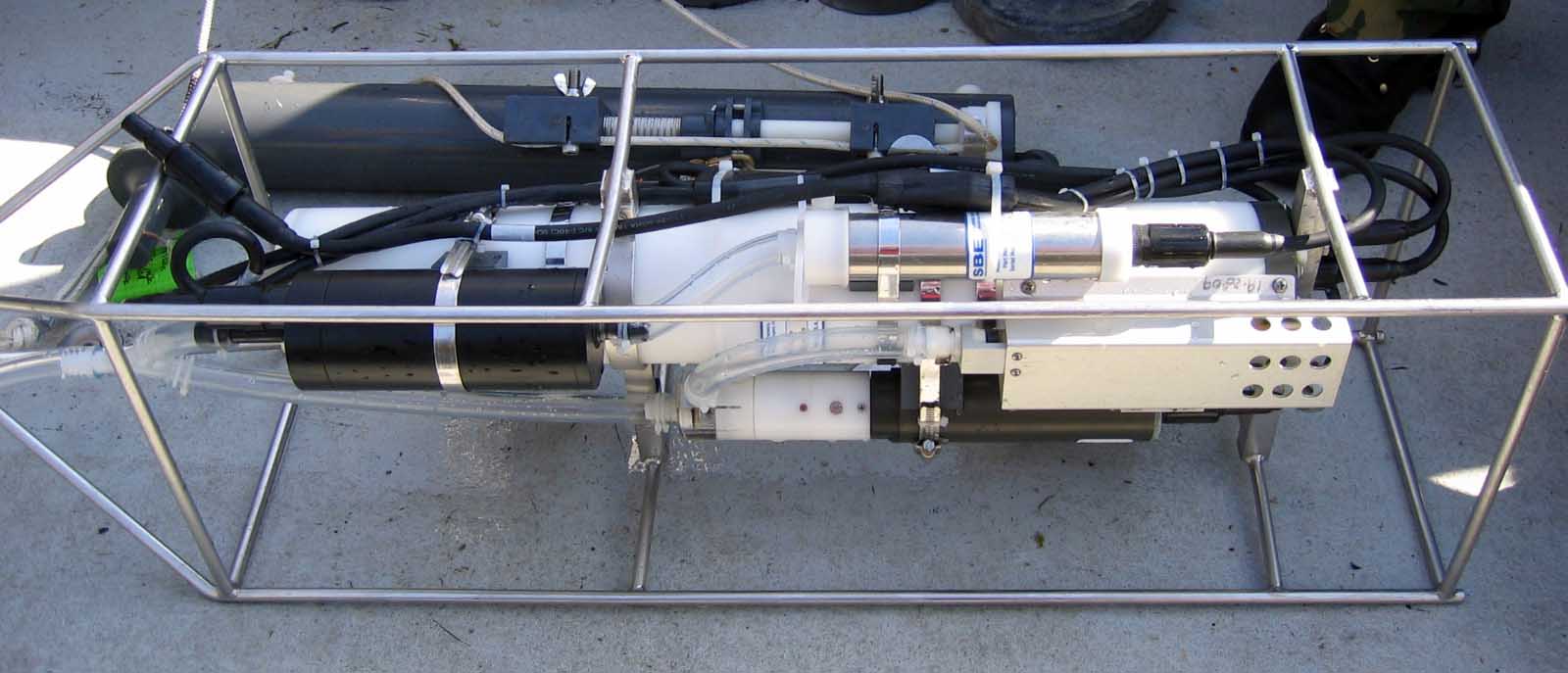
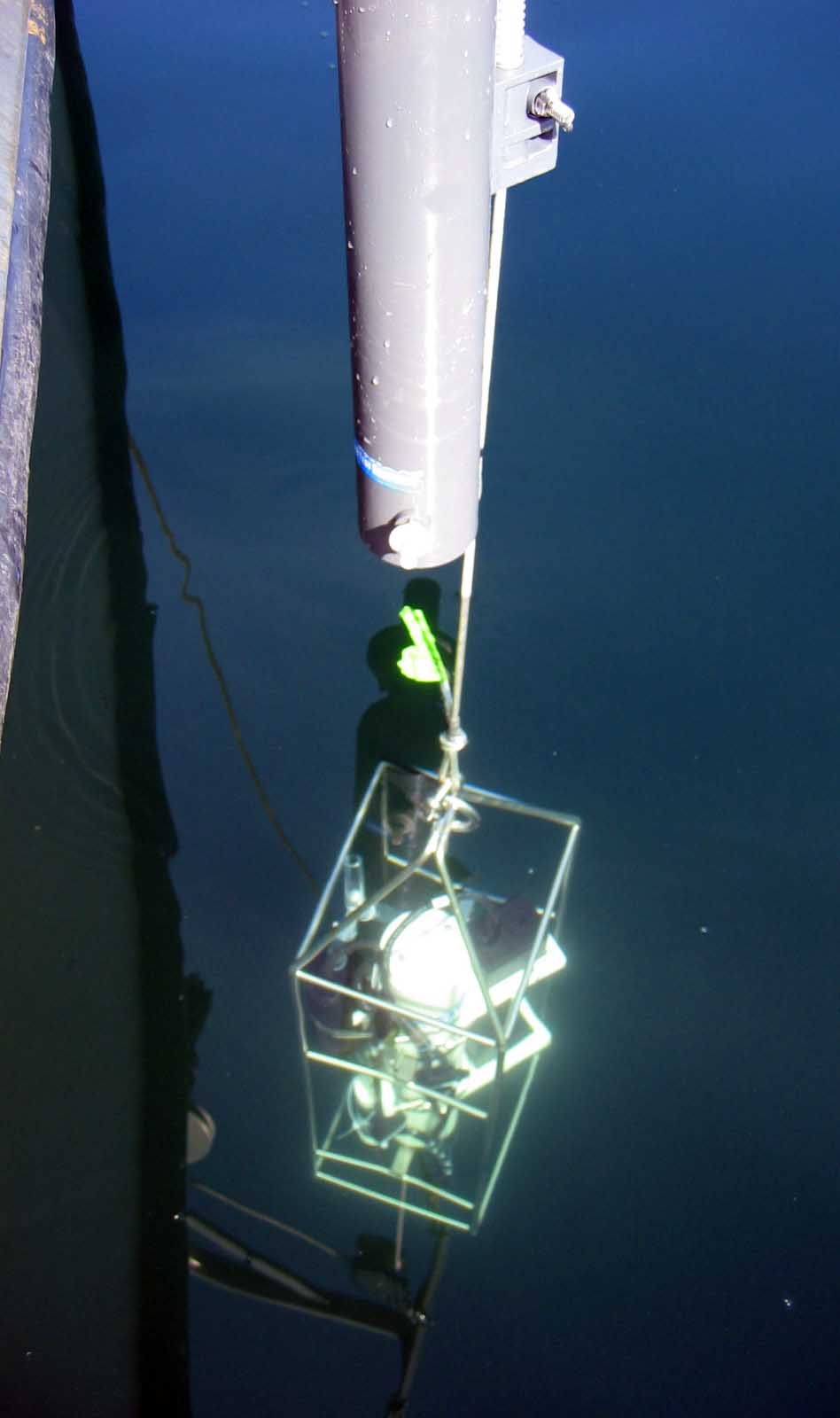
Niskin Bottle:
The Niskin bottle used was 4.0 or 2.5 liters and was lowered manually in meter increments to the desired depth. The following chemical properties were analyzed at all 25 sampling stations:
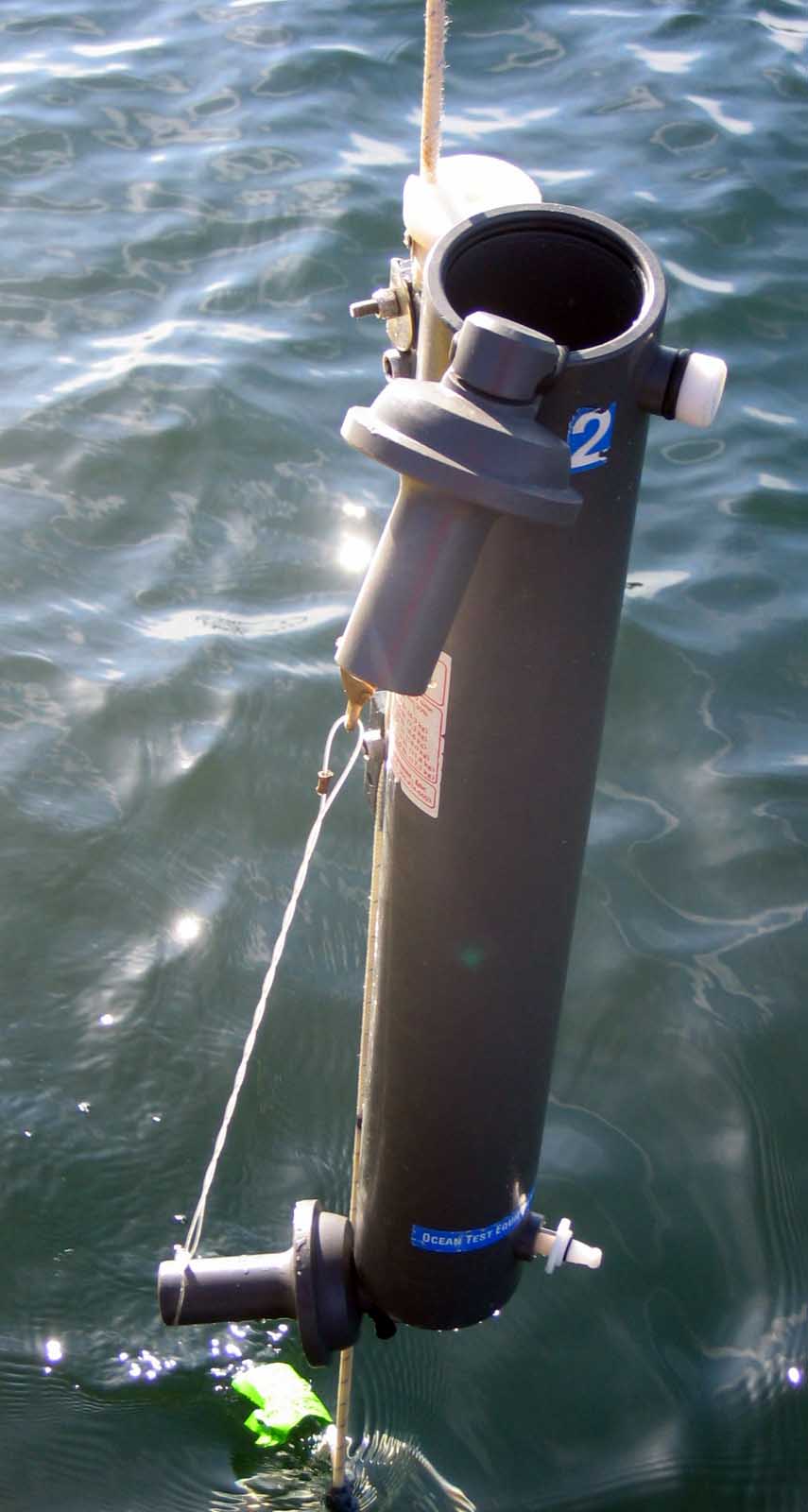

Chlorophyll a: Replicate samples were taken at each sampling station, two of which were collected at depth and two at the surface. The samples were stored on ice for transport. In the lab, samples were processed according to the UWT Chlorophyll Procedure (Strickland and Parsons, 1972).
Dissolved oxygen: Replicate samples were taken at each sampling station, two of which were collected at depth and two at the surface. The samples were collected in pre-measured flasks that were sealed with a stopper. Water was drawn from the Niskin bottle through a rubber hose to prevent exposure to atmospheric oxygen. Once filled, the flasks were injected with 1 ml of manganous chloride and 1 ml of alkaline sodium iodide reagents. The stopper was placed in the flask, its contents shaken and stored in the dark for transport to the laboratory. At the lab, the remaining steps of the Winkler Titration Method were performed using a Dosimat automatic titrator (Carpenter, 1966).
Nutrients: One surface and one at depth sample was collected at the transect points. Samples of approximately 30 ml were forced through a micro filter to remove suspended solids. The bottles were frozen and sent to the University of Washington Marine Chemistry Lab to be analyzed.
Secchi Disk:
The Secchi disk was 8-inches in diameter with alternating black and white quadrants. This instrument is used to measure light attenuation in surface water and was lowered in 1/2 meter increments. Measurements were taken at each of the sampling stations. All of the surface measurements were collected off the side of the research vessel with consistent light.
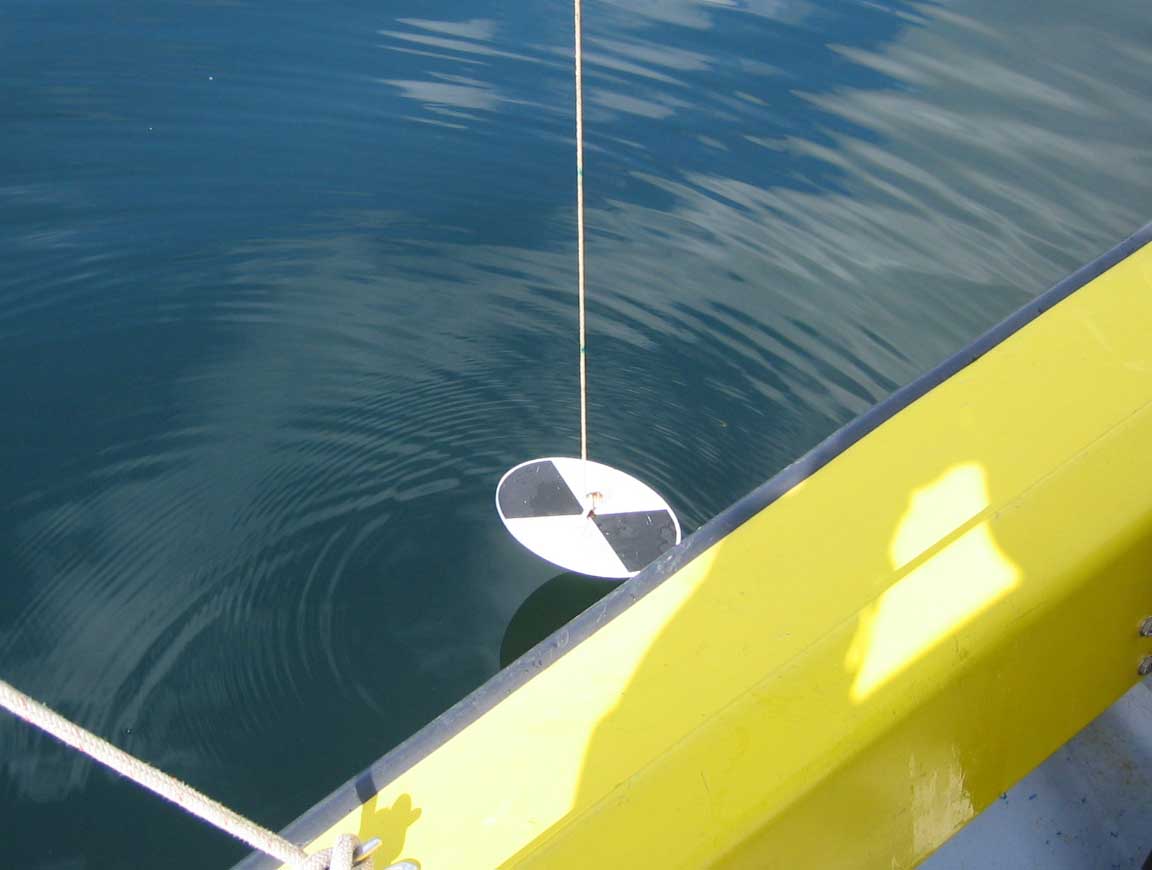
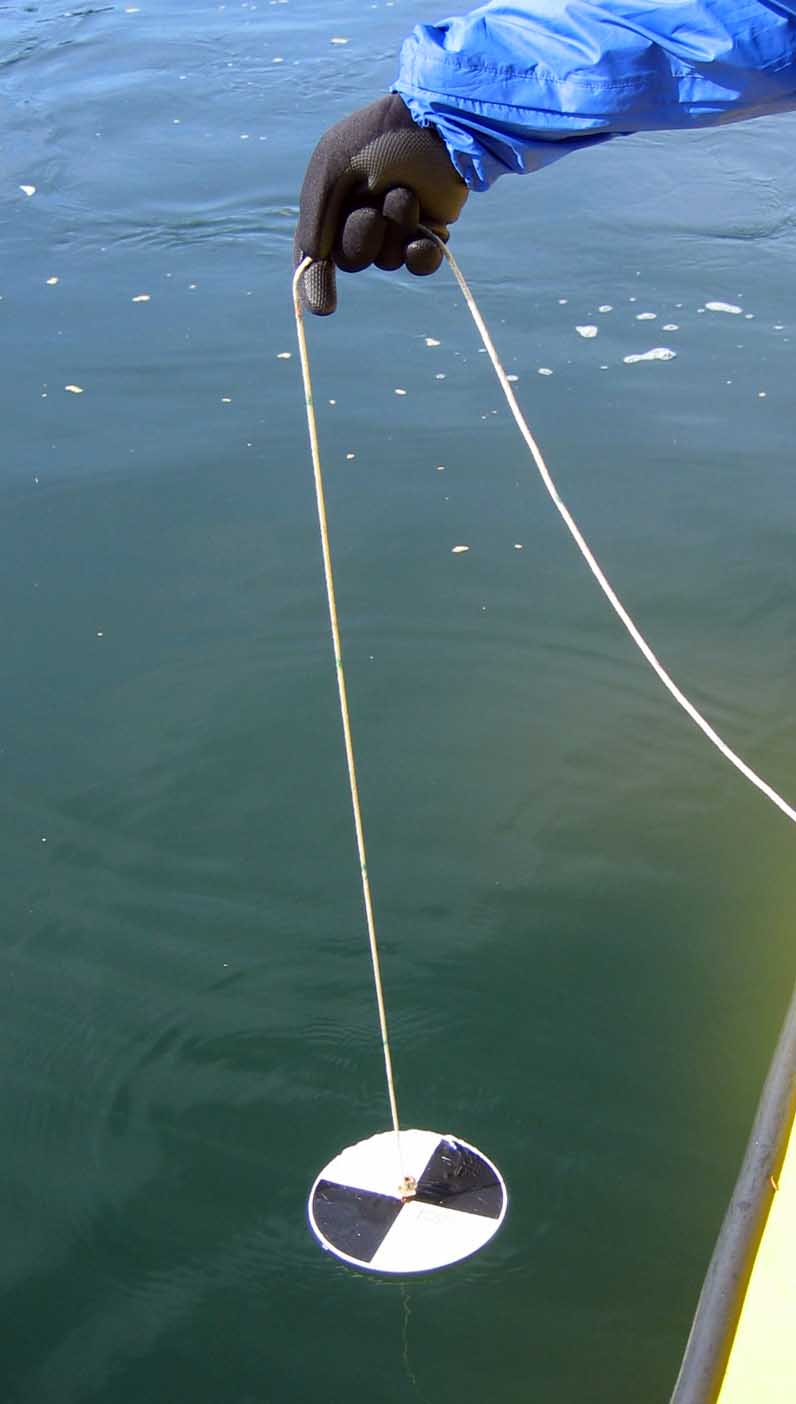
LICOR Meter:
The Licor Meter was a component of the CTD used by the Hood Canal Salmon Enhancement Group. Licor is the company that manufactures the light meter, a device used to measure light transmission. As sunlight radiates and passes through the water column, it is absorbed by primary producers, backscattered and turned into heat. Light transmission decreases with depth, and as a result there is less energy for photosynthetic organisms. Using the light meter, one can find the 99% absorbance level, where plankton can no longer survive off sunlight alone.
Plankton Samples:
The Niskin bottle was used to gather and examine types of plankton. Either a 2.5L or 4.0L Niskin bottle was filtered through a 20 micron net mesh. Each sample was collected at the surface. Plankton samples were collected at sample stations 1, 7, 11, 18 and 25. Plankton samples were counted using a compound microscope and were placed onto a Palmer Counting Slide, which holds 0.1 ml of fluid. The individual types of phytoplankton were counted and recorded. Density populations were calculated by taking the total number of phytoplankton dividing by total volume counted and multiplying by the total ml of the sample jar. This number was then divided by jar volume to provide phytoplankton per ml of water.

Van Veen Grab Sampler and Grain Size Analysis Sieve:
The Van Veen Grab Sampler is a device used to collect samples of bottom sediment from the ocean floor. Sediment samples were obtained at sample stations 1, 3 and 4. Once collected, the samples were stored on ice until further analysis could be completed. Sediment particle sizes were analyzed with a shaker sieve device. The sediment was stored in 60 degree conditions for 24 hours to remove moisture. Once the sample was dried, the weight was recorded. The sample was then placed in a six tiered system of varying size sieves in which it is shaken for a period of 30 minutes. The sediment falls through each layer of the sieve until it is too large too proceed. The weight is then recorded for each layer.
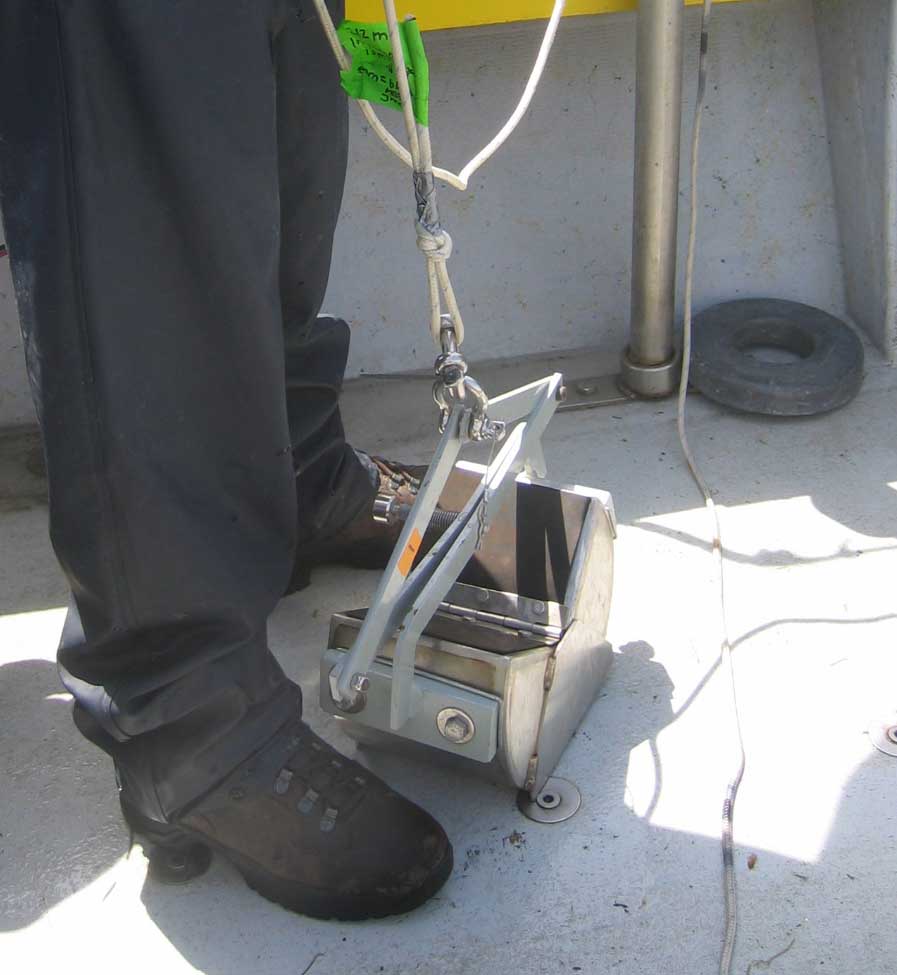
[Main] [Introduction] [Sampling Locations] [Methods] [Results/Discussion] [Data Repository]









